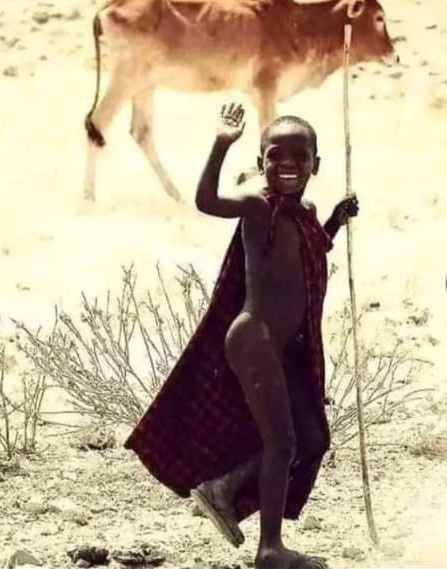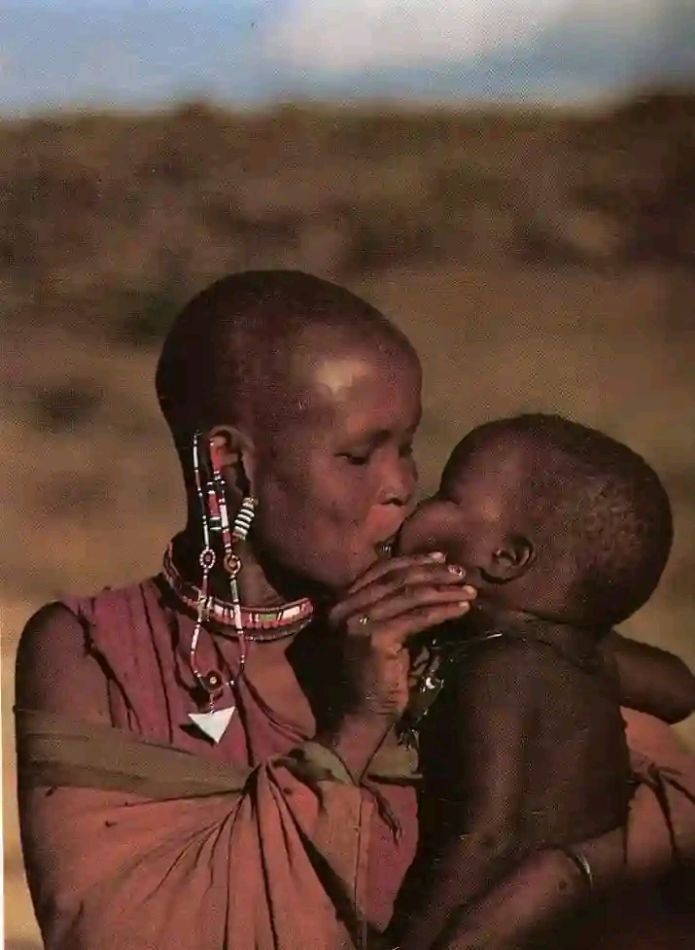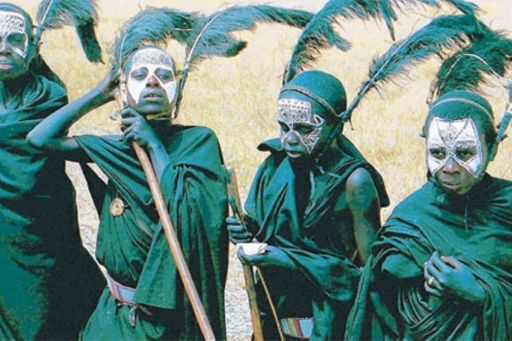I Masai oggi, tra tradizione e innovazione. Il racconto di Saitoti della comunità Maa, in Kenia
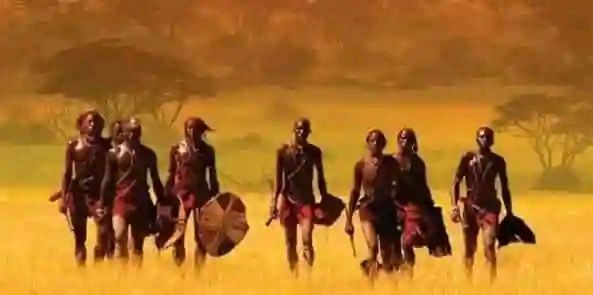
servizio di Francesca Lippi
Cosa significa essere un Masai oggi? Seguire riti, tradizioni, consuetudini tramandati di generazione in generazione, ma anche utilizzare le moderne tecnologie, frequentare la scuola e crescere come comunità al passo coi tempi? Di questi argomenti abbiamo provato a parlare con Saitoti, un giovane Masai che ci ha raccontato la vita nella sua comunità, Maa. Abbiamo incontrato Saitoti, al secolo Alex Ketukei Partoti, a Diani, località di 100mila abitanti ad un’ora di strada da Mombasa, in Kenia. Saitoti ci ha spiegato che la sua comunità vive seguendo la tradizione dei padri, anche se, per sopravvivere, ha dovuto modificare alcune consuetudini che potrebbero ledere alla comunità stessa. Ad esempio, il cibo ai bambini piccoli, oggi, non viene più masticato dalle madri e passato di bocca in bocca e oggi i ragazzi Masai frequentano la scuola, cosa che in passato non avveniva. L’utilizzo dei cellulari e di altre tecnologie anche tra i Masai ormai è cosa acquisita.

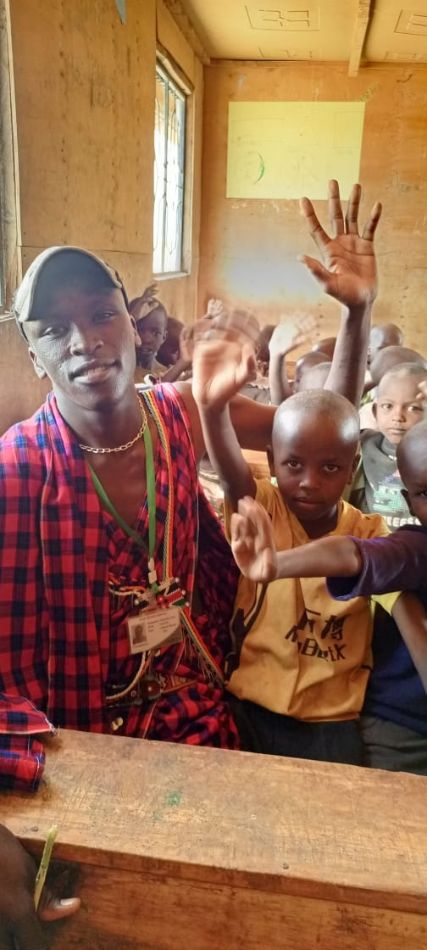

LA STORIA
“I Masai conducevano una vita nomade e i ragazzi si prendevano cura delle proprie famiglie quando avevano meno di 10 anni. Questa era la vita dei Masai prima del XIX secolo” spiega Saitoti “le ragazze di questa età andavano a prendere la legna da ardere. (Maasai boys looking after the castles when they are less than 10years of age. This is the nomadic life for maasai before 19th century. Girls at this age will be fetching firewood). “Ogni volta che un uomo Masai vuole sposarsi o meglio vuole avere una bella donna della comunità Maa, deve uccidere un leone. Un gruppo di 10 uomini deve andare nella boscaglia e cacciare i leoni fino a quando non lo raggiungono. E in questo scenario, come si può identificare il vincitore del leone quando torna al villaggio? La prima lancia che ha infilzato il leone determina il vincitore, il quale porterà la coda del leone, mentre il secondo e il terzo porteranno la parte superiore della zampa anteriore del leone, in cima alle loro lance. I tre uomini usciranno dal gruppo quando raggiungeranno il villaggio per ottenere una facile identificazione e tutte le donne porteranno una zucca piena di latte che verseranno sui 3 uomini. E’ in quel momento che all’uomo viene dato un nuovo nome come Saitoti o Pilenanga ed è probabile che ottenga una donna molto bella nella comunità Maa, grazie al suo coraggio.
Whenever a maasai man wants to marry or rather want to get a beautiful woman in maa community he have to kill a lion. A group of 10 men have to go to the Bush and hunts lions until they catch up with it. And at this scenario, how can you identify the winner of the lion when they come back to the village ?
The first spear to spear the lion determined the winner of the lion.
The winner will be carrying the tail of the lion while the second and the third will be carrying the upper born of the front leg of the lion on top of their spears.
The three men will pop out of the group when they reach to the village for easy identification and all the women will be carrying calabash full of milk and pouring on the 3 men. And at this time the man is given a new name like Saitoti or Pilenanga and he’s likely to get a very beautiful woman in Maa community due to this bravery and courage.
-Come si distinguono i Masai dalle altre tribù?-
“Puoi identificare i Masai attraverso 3 modi principali. Come puoi notare ho delle cicatrici sulle guance che sono state fatte bruciando un filo metallico circolare applicato sulla pelle delle gote all’età di 3 o 4 anni. E questo marchio è diventato un passaporto per la comunità Maa oltre confine.
I Masai non hanno i due denti incisivi nella parte inferiore della bocca, sai perché? In passato, quando i Masai non sapevano cosa fosse un ospedale, c’era una diffusione del tetano che causava il blocco delle mascelle. A quel tempo, i Masai usavano il vantaggio del divario tra i denti incisivi per somministrare farmaci e nutrivano anche i pazienti attraverso lo stesso spazio tra i denti.
In passato non c’erano scuole e i Masai devono cercare un modo per apparire belli e attraenti. Quindi il pitching è stato fatto a entrambi i sessi come una forma di prova del coraggio.
How can you identify maasai from other tribes?
You can Identify maasai through 3 main ways from other tribes.
1. Maasai have a circular tortue on their cheeks. They just make a metallic wire in a circular manner, burn it in fire then burn the two cheeks at the age of 3years or 4 years old. And this mark became a passport for maa community across the border.
2. Maasai shed two teeth when milk teeth grow as well as when parment teeth grow. Why? This is because in the past when maasai never knew what a hospital is, there was a spread of tetanus which used to cause the locking of the Jaws. At this time, maasai used the advantage of the gap to administer medicines and also fed the patients through the same gap.
3. Maasai also have the pitching of the years. This is because in the past there were no schools and maasai have to look for a way that they look beautiful and attractive. So pitching was done to both genders as a form of testing courage.
IL MATRIMONIO
–Come avviene il matrimonio tra i Masai?– La comunità Maa un tempo prevedeva il matrimonio all’età di 16 anni per le ragazze e di 18 per i ragazzi. Ma gli anziani della comunità si sono resi conto che a questa età queste persone sono ancora bambini, quindi non sono maturi abbastanza, perciò sono stati aggiunti 4 anni da entrambe le parti. Quindi, attualmente, il matrimonio avviene rispettivamente all’età di 20 e 22 anni. I Masai non si sposano per amore, ma per decisione dei genitori, soprattutto per la prima moglie. I Masai sono poligami. Sposano più di una moglie. E come fa un uomo a trovare moglie? Diciamo che il padre del giovane futuro sposo è un amico del padre della ragazza. Possono semplicemente lasciare che i loro figli si sposino tra loro per rendere forte la loro amicizia.”
Maa community used to marry at the age of 16 years for girls and 18 for boys. But the elders of the community came to realise that at this age these people are still kids so they haven’t matured enough. They add 4 years on both sides. So currently marriage happens at the age of 20 years and 22 years respectively.
Maasai don’t marry through love but through parents decision especially for the first wife. Maasai are polygamous. They do marry more than one wife. And how does a man get a wife?
Let’s say the man father is a friend to the girls father. They can just let their children marry each other to make their friendship strong.
LA NASCITA
–Cosa succede quando nasce un bambino nella comunità Maa?- Quando nella nostra comunità nasce un neonato, le donne cantano di fronte alla casa della donna che ha partorito per dare belle vibrazioni al nuovo nato. In questo momento, il numero di volte in cui un bambino piange, determina la salute e il nome da dare in base agli eventi quotidiani della giornata, in particolare alle condizioni meteorologiche. Il padre del bambino macella anche una pecora o una capra per purificare tutto ciò che viene fatto dalle donne.
In maa community when a new born baby is born the women used to sing next to the house of the woman who have given birth to give illulations to the new born baby. At this time the number of times a child cries determines the health and the name to be given according to the situations of the daily occurrence of the day especially weather conditions. The man also slaughters a sheep or a goat to purify everything done by the women.
IL CIBO: DI MADRE IN FIGLIO
“In passato i Masai erano soliti nutrire i loro bambini piccoli direttamente dalla bocca della madre. Questo dimostrava amore e molta cura per la comunità Maa, perché il cibo era difficile da masticare per un bambino piccolo, poiché i Masai si nutrivano principalmente di carne, quindi i bambini non potevano masticare perché erano senza denti. Questo mostrava amore reciproco tra le donne Masai e i loro figli. – E oggi, cosa è cambiato?– ” Purtroppo ci sono varie infezioni in corso e la comunità Maa non lo permette più. Attualmente i bambini devono essere allattati fino all’età in cui iniziano a nutrirsi da soli. L’alimentazione attraverso la bocca non è più consentita.”
In the past maasai used to feed their young children directly from the mother’s mouth. This showed love and alot of care to maa community. This is simply because the food might be too hard for a baby to chew since maasai used to feed on meat mostly. So young kids can’t chew because they don’t have teeth. This was a mutual love between maasai women and their kids. Only that there are various infections happening now that maa community don’t allow this anymore. Currently kids have to lactate until the age that they start feeding themselves directly. Feeding through the mouth isn’t allowed anymore.
I RITI DI PASSAGGIO
La comunità Masai si sottopone a 3 riti di passaggio:
1. Questa comunità ha l’iniziazione di entrambi i sessi. Quando un ragazzo o una ragazza vengono circoncisi (iniziati) indossano un tessuto nero che significa novizi.
2. Dopo un anno di circoncisione, i ragazzi vengono rasati per diventare giovani guerrieri che in questo momento devono andare nella boscaglia per un addestramento di 3 mesi. Questo è il periodo in cui imparano le tattiche su come uccidere e difendersi dagli animali selvatici e dall’uomo.
3. Abbiamo anche l’eunoto che è la rasatura dei peli dopo l’applicazione dell’ocra rossa. Ciò significa che i guerrieri sono ora guerrieri anziani poiché l’altro gruppo di età sta facendo capolino.
4. Dopo 2 anni, la comunità maa ha una cerimonia di bevute di latte in cui i guerrieri sono ora autorizzati a fare tutto da soli prima della fase di diventare guerrieri junior. I guerrieri non dovrebbero assumere sostanze grasse nel villaggio
5. Dopo questo c’è il consumo di carne e questo è difficile per la comunità. Le donne devono essere completamente pure.
Maasai community undergo 3 rites of passage like;
1. This community have got initiation of both genders. When a boy or a girl get circumcised (initiated) they put on a black fabric signifying novices.
2. After one year of circumcision, they boys get shaved to become junior warriors who at this time have to go to the Bush for a 3months training. This is the period they learn the tactics on how to kill and defend themselves from the wild animals and human.
3. We also have eunoto which is the shaving of hairs after the application of red ochre. This signifies that the warriors are now senior warriors as the other ageset is popping in.
4. After 2years maa community have milk drinking ceremony where the warriors are now allowed to do everything on their own prior to the stage of becoming junior warriors. Warriors are not suppose to take any fat substances in the village
5. What follows After this is the meat eating and this is hard to the community. Women have to be fully pure from the other ages ageset.
